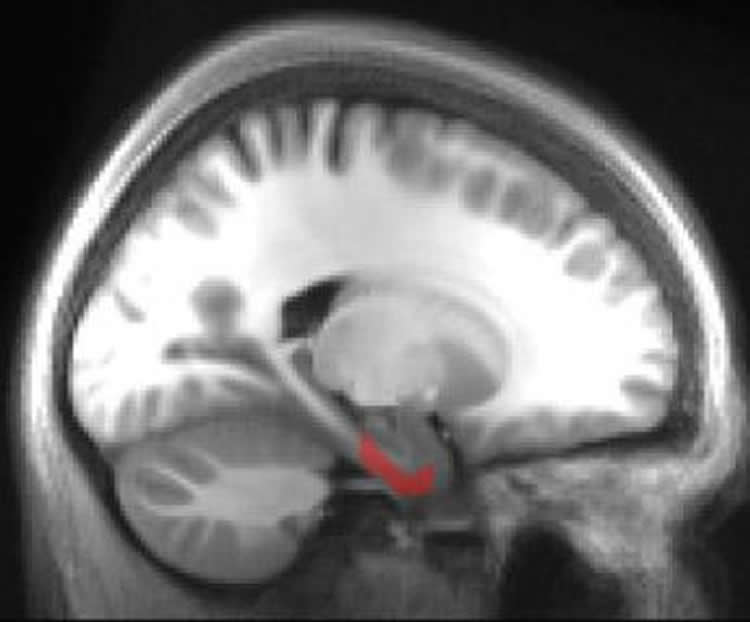Evidence of grid cell activity has been seen in healthy volunteers asked to imagine moving through an environment in new UCL research, which could help to explain why people with Alzheimer’s can have problems imagining as well as remembering things.
Evidence of grid cell activity has been seen in healthy volunteers asked to imagine moving through an environment in new UCL (University College London) research funded by the Medical Research Council and Wellcome Trust.
The study, published in Current Biology, used fMRI scans to detect brain activity consistent with grid cell activity in the entorhinal cortex, an important ‘hub’ for navigation and memory.
The entorhinal cortex is one of the first areas affected by Alzheimer’s disease, so the latest research could help to explain why people with Alzheimer’s can have problems imagining as well as remembering things.
Grid cells are brain cells that act as an internal coordinate system, firing at a series of locations that form a hexagonal grid across our environment as we move around it. The latest research provides the first evidence that these cells are also used when we imagine navigating, not only for tracking past or present environments.
“People with Alzheimer’s disease can find it difficult to visualise and remember scenes, and our new findings may help to explain why,” says senior author Professor Neil Burgess, Director of the UCL Institute of Cognitive Neuroscience. “We previously developed a test called the Four Mountains Test, where participants have to hold in mind a mountainous landscape and then try to identify it from a line-up of four landscapes, one of which is the original shown at a different point of view. This test has recently been shown to correlate with the progression of Alzheimer’s disease. So our latest research suggests that difficulties with the task may be related to a loss of grid cells in the entorhinal cortex.”

The study suggests that grid cells are involved in a broader range of cognitive process than previously thought.
“It is particularly exciting to see the involvement of a specific type of neuron whilst people are simply imagining moving through an environment,” explains lead author Dr Aidan Horner, who conducted the study at the UCL Institute of Cognitive Neuroscience and is now at the University of York. “This suggests that grid cells may contribute to more than just spatial navigation and are involved more broadly in planning and imagining the future. It is particularly difficult to link work at the neuronal level with higher-order cognitive processes. It is therefore incredibly exciting to see evidence for grid cells in imagined navigation, bridging the gap between neurons and mental imagery.”
Funding: The research was funded by UK Medical Research Council, Wellcome Trust.
Source: Harry Dayantis – UCL
Image Source: The image is credited to Professor Neil Burgess, UCL.
Original Research: Full open access research for “Grid-like Processing of Imagined Navigation” by Aidan J. Horner, James A. Bisby, Ewa Zotow, Daniel Bush, and Neil Burgess in Current Biology. Published online January 18 2016 doi:10.1016/j.cub.2016.01.042
Abstract
Grid-like Processing of Imagined Navigation
Highlights
•Grid cells fire in a spatial pattern as mammals actively navigate their environment
•Grid cells might move the viewpoint of imagination, aiding goal-directed navigation
•Human entorhinal cortex shows a grid-like fMRI signal during imagined navigation
•This signal is similar to that seen in the same people during virtual navigation
Summary
Grid cells in the entorhinal cortex (EC) of rodents and humans fire in a hexagonally distributed spatially periodic manner. In concert with other spatial cells in the medial temporal lobe (MTL), they provide a representation of our location within an environment and are specifically thought to allow the represented location to be updated by self-motion. Grid-like signals have been seen throughout the autobiographical memory system, suggesting a much more general role in memory. Grid cells may allow us to move our viewpoint in imagination, a useful function for goal-directed navigation and planning, and episodic future thinking more generally. We used fMRI to provide evidence for similar grid-like signals in human entorhinal cortex during both virtual navigation and imagined navigation of the same paths. We show that this signal is present in periods of active navigation and imagination, with a similar orientation in both and with the specifically 6-fold rotational symmetry characteristic of grid cell firing. We therefore provide the first evidence suggesting that grid cells are utilized during movement of viewpoint within imagery, potentially underpinning our more general ability to mentally traverse possible routes in the service of planning and episodic future thinking.
“Grid-like Processing of Imagined Navigation” by Aidan J. Horner, James A. Bisby, Ewa Zotow, Daniel Bush, and Neil Burgess in Current Biology. Published online January 18 2016 doi:10.1016/j.cub.2016.01.042







